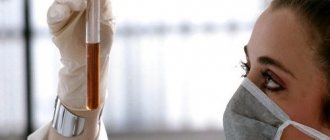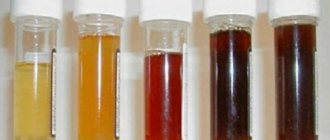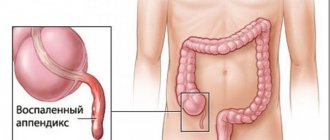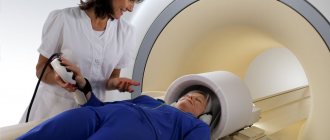Categories
AllergistAnesthesiologist-resuscitatorVenereologistGastroenterologistHematologistGeneticGynecologistHomeopathDermatologistPediatric gynecologistPediatric neurologistPediatric urologistPediatric surgeonPediatric endocrinologistNutrologistImmunologistInfectious disease specialistCardiologistCosmetologistSpeech therapistElorologistMammologistMedical lawyerNarcologistNeurologistNeurosurgeon NephrologistNutriciologistOncologistOncourologistOrthopedist-traumatologistOphthalmologistPediatricianPlastic surgeonProctologistPsychiatristPsychologistPulmonologistRheumatologistRadiologistSexologist-AndrologistDentistTherapistUrologistPharmacistPhytotherapistPhlebologistSurgeonEndocrinologist
The value of protein fractions in the analysis
To count protein fractions in the blood, a special analysis is prescribed - a proteinogram. Any deviation of the protein from the norm indicates the presence of disturbances in the functioning of the body on the part of the immune, metabolic and metabolic systems. Laboratory tests also make it possible to detect hidden infections when there are no obvious symptoms.
To obtain a more specific picture, additional studies of a separate group of proteins or one blood element are prescribed. If the gobulin content is elevated, this may indicate the presence of some chronic process in the body, for example, arthritis or cirrhosis.
General information
One of the main components of blood is protein, which consists of fractions (albumin and several types of globulins) that form a certain formula of quantitative and structural relationships. In inflammatory (acute and chronic) processes, as well as in oncological pathologies, the formula of protein fractions is disrupted, which makes it possible to assess the physiological state of the body and diagnose a number of serious diseases.
Under the influence of an electric field (in practice, electrophoresis is used), the protein is divided into 5-6 fractions, which differ in location, mobility, structure and proportion in the total protein mass. The most important fraction - albumin - accounts for more than 40-60% of the total protein in blood serum.
Other fractions are globulins:
Alpha-1
These include acute phase (rapid response) proteins:
- antitrypsin - blocks proteolytic enzymes (during inflammation in the lung tissue, it suppresses the function of elastase, preventing the degradation of elastin in the walls of the alveoli and the development of pulmonary emphysema);
- acidic glycoprotein (orosomucoid) - promotes fibrillogenesis;
- lipoproteins are responsible for the delivery of lipids to other cells;
- transport proteins bind and move important body hormones (cortisol, thyroxine).
Alpha-2
Also include acute phase proteins:
- macroglobulin activates the body’s defense processes during infectious and inflammatory lesions;
- haptoglobin combines with hemoglobin;
- ceruloplasmin detects and binds copper ions, neutralizes free radicals and is an oxidative enzyme for vitamin C, adrenaline;
- lipoproteins ensure the movement of fats.
Beta
This group includes proteins:
- transferrin - ensures the movement of iron;
- hemopexin - prevents the loss of iron, binds hemoglobin, myoglobin, catalase, delivers them to the liver, where heme breaks down and iron binds to ferritin.
- complements - participate in the immune response;
- beta lipoproteins - move phospholipids and cholesterol;
- some immunoglobulins also provide an immune response.
Gamma
The fraction includes the most important proteins, immunoglobulins of different classes (IgA, IgM, IgE, IgG), which are antibodies and are responsible for local and general immunity of the body.
As a result of the development of acute or exacerbation of chronic inflammatory diseases, the ratio of protein fractions changes. A decrease in the amount of one or another type of protein can be observed in immunodeficiencies, which indicate serious processes in the body (autoimmune diseases, HIV, oncology, etc.). Excess often indicates monoclonal gammopathy (production of abnormal types of immunoglobulins). The consequences of gammopathy include multiple myeloma (plasma cell cancer), Waldenström's macroglobulinemia (bone marrow tumor), etc. Polyclonal gammopathy (secretion of abnormal amounts of immunoglobulins) may also occur. The result is infectious diseases, autoimmune pathologies, liver diseases (for example, viral hepatitis) and other chronic processes.
The role of alpha1-globulins and alpha2-globulins
Alpha1-globulins and alpha2-globulins are the smallest groups of proteins, accounting for 2-5% and 7-13% of the total protein, respectively.
Alpha1-globulins form alpha1-antitrypsin, alpha1-acid glycoprotein, alpha-lipoprotein and thyroxine-binding globulin. Among the many functions of alpha1-globulin, one can highlight participation in the body’s defense processes, especially in inflammatory diseases.
Alpha2-globulins form alpha2-macroglobulin, ceruloplasmin and haptoglobin. Alpha2-globulins play the role of markers of pancreatitis, transport copper, support the transport of iron, protect the kidneys from the harmful effects of hemoglobin, and are also activated during inflammatory diseases and tissue damage.
What causes a decrease in gamma globulins
Such a phenomenon as an increase in the level of gamma globulins does not occur without reason. This always indicates a problem, as the body has begun to produce antibodies.
A high content of these cells is called hypergammaglobulinemia.
This condition can be observed in such pathological processes as:
- liver diseases;
- autoimmune pathologies;
- problems with the respiratory system.
This phenomenon (decrease) can occur due to the following reasons:
- a feature of the body with which a person was born;
- for some people, a low level is normal, for example, in children aged three to five months;
- The reasons for the deviation are not clear.
A decrease in the level of gamma globulins can also be observed in cases where the body has spent most of these cells fighting the disease.
This is often observed:
- with nephrosis;
- in children after removal of the spleen;
- if the body has been damaged by radiation;
- if the body suffers from infection for a long time.
Gamma globulins are elevated when the body produces antibodies as a result of an immune system reaction. This occurs in infectious diseases, acute inflammatory processes, diffuse connective tissue diseases, burns, and tissue destruction. Hypergammaglobulinemia is observed in the following diseases:
- liver cirrhosis;
- chronic hepatitis;
- lupus erythematosus;
- endotheliomas;
- rheumatoid arthritis;
- candidomycosis;
- osteosarcomas;
- tuberculosis;
- chronic lymphocytic leukemia;
- sarcoidosis;
- cardiac ischemia.
A decrease in the content of gamma-glubulins in the blood plasma, or hypogammaglobulinemia, can be primary or secondary. The primary ones include:
- physiological – observed in small children 3-5 months old and considered normal;
- congenital;
- idiopathic – occurring for unknown reasons.
Secondary hypogammaglobulinemia develops against the background of diseases that deplete the immune system. Gamma globulin decreases in the following cases:
- with nephrotic syndrome (nephrosis);
- in case of impaired synthesis of immunoglobulins;
- during therapy with cytostatic drugs;
- for long-term infectious diseases;
- in children after removal of the spleen;
- as a result of exposure to radiation.
Gamma globulins not only protect the body from various pathogenic microorganisms. These cells are used to create drugs against diseases and to improve the immune system.
As well as conditions that can cause these symptoms:
- problems with the thyroid gland;
- diabetes;
- anemia;
- liver diseases;
- some autoimmune diseases;
- multiple sclerosis;
- malnutrition;
- cancer.
A detailed study of the level of gamma globulins and individual classes of these proteins is performed when diagnosing diseases of the immune system. As part of such an examination, a comprehensive immunological blood test is performed or the level of individual gamma globulin fractions is determined.
- Immunoglobulins M - IgM provide the body's primary response to a new infection and short-term protection for several weeks before the appearance of immunoglobulins G (IgG).
- Immunoglobulins G - IgG - make up 70-80% of the total number of immunoglobulins; form long-term immune protection and prevent re-infection. They rise a few weeks after infection of the body, after which their level decreases and stabilizes.
- Immunoglobulin A - IgA - is found in saliva, tears, respiratory and gastric secretions and breast milk. IgA provides protection against infection in mucosal areas of the body. IgA, as well as C-reactive protein and fibrinogen, belong to the beta-gamma zone, since these proteins migrate between beta and gamma globulins.
- Immunoglobulin E - IgE - produced by the immune system in response to the appearance of an allergen; An elevated IgE level indicates an allergic process.
- The role of IgD is not clear.
A physiological decrease in the amount of gamma globulins occurs normally in children aged 3-4 months. In adults, this process indicates:
- decreased immunity,
- violation of the formation of immunoglobulins,
- radiation sickness,
- long-term chronic infections,
- protein loss (nephrotic syndrome).
Also, gamma globulins are reduced during treatment with cytostatics, plasmapheresis and insufficient protein intake.
We recommend reading: How to donate blood for amylase?
Types of antibodies
There are 5 different types of antibodies produced by the body: IgA, IgG, IgM, IgE, IgD. Each of them helps in protecting the body from specific infections and diseases. Low antibody levels can make the body more susceptible to disease.
- IgA antibodies help protect mucous membranes that are exposed to the environment from infections. They are found in the nose, ears, eyes, digestive tract and vagina. They also provide local immunity against chlamydia.
- IgG antibodies help in the fight against bacterial and viral infections and toxins. They are found in body fluids.
- IgM immunoglobulins can be found in the blood and lymph. They are produced by the body in response to infection and help the immune system fight it.
- IgE antibodies are needed to fight allergens, such as pollen and spores, and parasites. Antibodies are found in the lungs, on the skin and mucous membranes.
- IgD antibodies are found in the tissues lining the chest and abdominal cavity. They make up less than 1% of plasma immunoglobulins. The functions of these antibodies are not yet well understood.
Gamma globulin is found in blood plasma. Acting together with antibodies, it protects a person from infections and diseases. Thus, maintaining the required level of gamma globulin is essential for a healthy lifestyle. We get sick when our immune system cannot cope with the pathogen.
A gamma globulin blood test is performed to check for the presence of antibodies (also called immunoglobins or immune gamma globulins) in the blood plasma. Their levels will indicate the presence of viruses, bacteria or cancer-causing cells. This test is a diagnostic procedure that helps doctors make a diagnosis and develop treatment. It should be noted that this test is only performed if serious illness is suspected.
Beta globulins - what is it?
Beta globulins are protein fractions that transport iron throughout the body and ensure that it is not excreted by the kidneys. There are several types of globulins and certain norms for their content in the blood. When deviations from normal values increase or decrease, negative reactions occur in the body.
Definition of globulins
Globulin is a blood protein that regulates the functioning of internal organs.
- transport vitamins and other useful components through the blood;
- participate in the production of antibodies against pathogenic microorganisms and viruses;
- are responsible for the functioning of the blood coagulation system;
- bind drugs, carbohydrates and other substances.
Hormones are responsible for the regulation of this protein in the blood: estrogen promotes their increase, and androgen - decreases them. In this regard, women should have more globulins in their bodies than the opposite sex.
- alpha globulins. Increased production of these proteins occurs when there is physical or chemical damage, as well as in the presence of a viral or bacterial infection in the body. Thanks to their action, tissues are restored, and bacteria stop multiplying;
- beta globulins. They belong to transport proteins;
- gamma globulins. This group includes immunoglobulins. Proteins responsible for protecting the body from viruses and bacteria. They are also called antibodies.
Thanks to the coordinated work of these protein fractions, internal organs function normally and successfully resist the negative influence of the environment.
Functions and norms of beta globulins
Blood serum contains protein fractions. The largest of them are called albumins. There are about sixty percent of them in the blood. All the rest are globulins.
- Transports iron through the blood.
- Prevents the kidneys from excreting large amounts of iron.
- They take an active part in the functioning of the immune system.
- Carries cholesterol through the blood.
- in the body of newborn children this protein should be from 5 to 9 g/l;
- for adults it is considered normal if the amount of beta globulins does not exceed 2.2-4 g/l.
- Beta 1 globulins. This group combines the blood content of transferrin, hemopexin, beta-lipoproteins, component C
- Beta 2 globulins. This group combines the blood levels of haptoglobin, alpha-2-macroglobulin, celuroplasmin, retinol, binding protein, and vitamin D.
All these components perform essential functions. Without their normal ratio, normal functioning of the body is impossible. These proteins should be in the blood, depending on age, from eight to fifteen percent.
Deviations from acceptable values
An increase and decrease in beta globulins indicates negative processes in the body.
- a person suffers from metabolic disorders;
- atherosclerotic changes in blood vessels develop;
- pressure in the arteries regularly increases;
- iron deficiency anemia of various etiologies develops;
- have been using hormone-containing drugs for a long time. In particular, medications that contain estrogen.
High levels of beta globulins are often found in the blood of pregnant women. This is due to physiological changes occurring in the body during this period.
A low content of this substance can be detected with a general lack of proteins in the plasma.
- an inflammatory process develops in the body;
- in the presence of malignant neoplasms;
- blood anemia occurred;
- in pathological conditions of the liver;
- a person does not eat properly and does not get enough protein into the body with food;
- symptoms of nephrotic syndrome were detected;
- testosterone, prolactin, glucocorticoids in the blood are increased;
- cells do not perceive the hormone insulin;
- certain deviations in the functioning of the pituitary gland have occurred;
- Pathologies of the endocrine system develop.
- If it is necessary to evaluate the immune system's response to treatment.
- If there are symptoms of an inflammatory process. The analysis also allows us to determine its prevalence.
- If the lymph nodes are enlarged.
- In the case where the analysis showed a significant increase in the erythrocyte sedimentation rate.
If a person often catches colds and cannot recover for a long time, has suddenly lost weight, suffers from diarrhea for a long time, gets tired quickly and often notices an increase in body temperature, then it is necessary to take a globulin test.
If the amount of protein is not normal, then further examination is prescribed to identify the cause of the deviation. Only after this can a specialist prescribe suitable therapeutic measures. The patient, in turn, must follow the doctor’s recommendations. This will speed up your recovery.
Hypo- and hyperglobulinemia
Low levels of globulin in the blood indicate a type of protein deficiency in the body
Globulins are one of the groups of whey proteins, the other group is albumin. Globulins include gamma globulins (antibodies), various enzymes and protein molecules that perform transport functions, the function of transporting hormones and metal ions. The specific profile of globulins is determined by electrophoresis of serum proteins. Electrophoresis (on paper or agarose) separates proteins in an electric field depending on their size and charge. There are four main groups of globulins: alpha 1 globulins, alpha 2 globulins, beta and gamma globulins. Some globulins are formed in the liver, while others are produced by the immune system. The globulins synthesized by the immune system are the most important and are usually called immunoglobulins. At their core, immunoglobulins are antibodies. Since the gamma fraction usually makes up the majority of globulins, if the level of globulins in the blood is low, the first thing to think about is antibody deficiency. The optimal range of globulins in the body is from 23 to 28 g/l. Along with determining the separate contents of globulins and albumins, the albumin/globulin ratio (albumin-globulin ratio) is usually calculated. Ideally, the albumin-to-globulin ratio is 1.0 or higher. The solubility and electrophoretic mobility of globulins is lower than for albumin. This test is important as it helps in diagnosing various diseases of liver disease, kidney disease (proteinuria), liver cirrhosis, autoimmune diseases, leukemia and hormonal imbalance. In these diseases, there is a significant drop in albumin levels. It should be noted that a low albumin/globulin ratio may reflect excess globulin production in diseases such as multiple myeloma or inadequate globulin production in cirrhosis.
Hypoglobulinemia is a condition in which there is a low level of globulins in the blood. This condition may be a sign of kidney disease. Ideally, there is virtually no protein in the urine. This is because during the process of urine formation, when blood plasma is filtered through the glomeruli, they do not allow large structures such as blood cells and proteins to pass through. However, with kidney infections, the structure of the glomerulus is disrupted, which leads to proteins getting into the urine. Loss of proteins in the urine is one of the causes of hypoglobulinemia. Another condition that is accompanied by low globulin levels is acute hemolytic anemia. In acute hemolytic anemia, red blood cells are destroyed either in the vessels or elsewhere in the body. The normal lifespan of red blood cells is about 120 days. However, when red blood cells are destroyed in the body before the completion of 120 days, they speak of hemolytic anemia. And since blood cells are built from protein molecules, their destruction and subsequent removal from the body leads to protein deficiency, which manifests itself in the form of hypoglobulinemia. Other causes of low blood globulin levels include liver disease. Liver diseases often lead to jaundice, which is nothing more than an increase in bilirubin levels, which occurs due to increased destruction of red blood cells in the body. Celiac disease and inflammatory bowel disease can also lead to low globulin levels in the body. Malnutrition and diseases such as kwashiorkor and marasmus can lead to low levels of globulin in the body.
How to properly prepare for analysis
No special preparation is required before taking the test. If your doctor orders additional blood tests, you may need to fast for several hours before the test. Check with your healthcare professional to see if there are any special instructions to follow if you are taking medications.
Globulin tests are blood tests. During the test, a medical professional takes material from a vein in the arm using a small needle. Once the needle is inserted, a small amount of blood will be collected in a tube or vial. You may feel a slight burning sensation as the needle enters or exits. The procedure usually takes less than five minutes. In infants or young children, a lancet is used to pierce the skin and the blood is collected in a glass pipette, test strip, or on a glass slide. A bandage may be placed over the area if there is bleeding.
Warning!
There is little risk when taking the test. There may be some pain or bruising where the needle was inserted, but most symptoms go away quickly.
Indications for testing for globulins
Indications for a blood test for globulins can be either a routine medical examination or the presence of any factors. The following symptoms indicate that there is an imbalance of globulin in the blood:
- fast fatiguability;
- alternating periods of decreased appetite with increased appetite;
- chronic gastrointestinal disorder;
- increased body temperature;
- blood clotting disorder;
- general malaise.
Fatigue is an indication for a globulin test.
Any of these symptoms indicates that you need to consult with a general practitioner, who, if necessary, will refer you to other specialists for diagnosis.
In addition, lymph nodes may become enlarged. An examination is necessary if the progression of inflammatory processes is suspected to assess their condition. If the initial examination and explanation of the condition to the patients themselves provide the basis for diagnosis, then the first test prescribed is a study of globulin blood fractions.
What to do if immunoglobulin G is elevated in a child?
Experts note that in the first six months after birth, this indicator may be reduced in babies. Parents should not panic, as this is due to the physiological characteristics of the body and the imperfection of the immune system; as the year progresses, the situation usually returns to normal.
However, if a decrease in IgG is detected in a child who has reached 12 months or more, then we can talk about:
- The presence of a neoplasm in the lymphatic system.
- Muscular dystrophy.
- Severe loss of proteins (often occurs with burns, dermatitis).
- Radiation disease.
- Immunodeficiency.
- Vitamin B12 deficiency.
- Impaired functioning of the kidneys or liver.
What measures to take?
First of all, the pediatrician should refer the baby to the appropriate specialist (after identifying the disease). Only a competent doctor can prescribe treatment aimed at eliminating the cause of the decrease in IgG.
Causes of elevated immunoglobulin
A sharp increase in immunoglobulin g is observed in children with:
- Chicken pox.
- Whooping cough.
- Scarlet fever.
- Meningococcal infection.
- Mumps.
- Pneumonia.
- Bronchitis.
- Diphtheria.
- Corey.
- Adenovirus infection.
- Rheumatism.
- Lymphocytic leukemia.
What should parents do?
Consultation with a specialist will help identify the cause of the increase in IG. After examination and medical history, the doctor will prescribe appropriate treatment. In case of acute infectious and viral diseases, a small patient may require hospitalization.
Therapy methods
Even carrying out a full diagnosis will not give accurate indicators of globulins in the blood. This indicator will vary depending on the equipment, so research results always indicate the current and acceptable value for this type of analysis. When prescribing treatment, they take this difference into account.
Increasing the level of indicators
Globulin mainly consists of amino acids formed from proteins. That is why it is possible to increase the level of the substance in the blood through proper nutrition, with sufficient protein content. Since this type of protein is produced by the liver, it would be a good idea to correct the functioning of this organ. Based on this, you need to follow a few simple recommendations.
- The patient's diet should include proteins of plant and animal origin, legumes, seafood and peanuts. At the same time, reduce the consumption of harmful carbohydrates high in sugar.
- Traditional methods. A decoction of immortelle will help improve liver function. To prepare it, pour 2 tbsp. dry herbs with a liter of water and cook for 15 minutes. After the product has infused until it cools completely, take 50 milliliters 2 times a day after meals. The course of treatment is 12-14 days with a break of 10 days.
- Medicines. Doctors usually prescribe vitamins and hypatoprotectors, such as Essentiale, Glutargin, Alphabet, etc.
You should not hope for an improvement in the situation by using only one of the methods of increasing globulins. An integrated approach is needed here, and nutrition should include not only proteins, but also slow carbohydrates, healthy fats and fiber.
Decreased globulin concentration in the blood
A decrease in the concentration of globulin in the blood occurs in the presence of diseases of the digestive system. A similar situation will occur if the body does not absorb proteins well. The following actions will help to forcibly reduce the level of substances:
- eliminating large doses of protein from food and increasing the amount of carbohydrates;
- inclusion of physical activity;
- drinking at least 2 liters of water per day;
- consuming decoctions of berries and rose hips, which will slow down the absorption of proteins;
- completing a course of glucose drips.
Any deviation of globulins from the norm is a pathology and requires medical intervention. Only a specialist will be able to indicate the exact cause of this situation and prescribe treatment aimed at eliminating the problems.
Andrey Yurievich
Sex hormone binding globulin
Gamma globulins in the blood should always be at a level of 12–22%. Beta globulin levels may increase in severe hepatitis and end-stage liver cirrhosis. In a precomatous state, the level of alpha and beta globulins sharply increases against the background of significant bilirubinemia.
Beta globulins take part in the transport of iron and prevent its excessive excretion by the kidneys, participate in immune reactions, and cholesterol transport.
A decrease in beta globulins is usually due to a general deficiency of plasma proteins. The amount of globulins is regulated by sex hormones: estrogens increase their level, androgens decrease them.
Accordingly, women contain more blood globulins than men. The liver produces most of the blood proteins, including SHBG - sex hormone binding globulin.
For the body to function properly, some of the hormones must be bound.
If you suspect that your globulin is high or low, consult your doctor. Globulins are a group of proteins that includes several subgroups: alpha 1, alpha 2, beta and gamma.
Their number fluctuates during illnesses. An elevated level of gamma globulins is called hypergammaglobulinemia.
For prevention and treatment, it is recommended to administer gamma globulins immediately after contact with an infected patient or in the early stages of the disease.
When a person has gamma globulins in his blood, the disease goes away faster and the likelihood of complications is reduced.
To date, gamma globulins have been isolated against influenza, dysentery, infectious hepatitis, tick-borne encephalitis, whooping cough, measles, rubella, smallpox, mumps, anthrax and scarlet fever.
Globulin is elevated - possible reasons:
Blood globulins also differ in size, electrical charge and voltage, and molecular shape. The amino acids necessary for the formation of globulins are obtained from food, and the synthesis process itself occurs in lymphocytes, liver and intestinal cells. Destroyed globulins are removed by cells of the liver, spleen, lymph nodes, kidneys and gastrointestinal tract.
Blood globulin analysis allows you to evaluate immune defense and the function of the organs involved in their formation. For a more detailed assessment of individual blood globulin fractions, targeted studies are carried out - for example, immunoglobulin G, alpha-fetoprotein, orosomucoid or protein electrophoresis.
During the day, 10-16 g of protein of this fraction is synthesized and decomposed. The level of globulin is increased in acute dystrophic liver damage, in the early stages of obstructive jaundice, in amyloidosis and fatty degeneration of the liver.
The fusion of beta and gamma globulin fractions on the electrophorogram is observed in some severe forms of liver cirrhosis.
Blood biochemistry: how to donate and how to read
An increase in the content of alpha globulins is usually observed in the case of chronic hepatitis, inflammatory diseases of the biliary tract, and long-term obstructive jaundice. In the recovery stage, albumins normalize before other fractions, and gamma globulins return to normal after all. Alpha globulin is elevated in chronic hepatitis, a further increase in their level indicates their exacerbation.
Beta lipoproteins
Thus, in chronic hepatitis, the worst prognostic indicator is a persistent increase in the content of a-globulins.
In liver cirrhosis, severe hypoalbuminemia has the most serious prognostic significance if there is a sharply increased globulin and there is a fusion of globulin fractions on the electropherogram.
This group of diseases includes multiple myeloma, monoclonal gammopathy of unknown origin, Waldenström's macroglobulinemia and some other conditions. Serum protein electrophoresis from a patient with Bruton's disease is characterized by the absence or extremely low intensity of the gamma globulin band.
Test results
A test for gamma globulin in the blood is carried out after taking a sample from a vein. Then the serum is separated from it, which is tested for antibodies.
Normal results are within the following limits:
- Immunoglobulin A – IgA: 0.4–2.5 g/l in adults and children over 12 years of age. The higher the level, the more likely you are to have chronic hepatitis, liver disease, rheumatoid arthritis and blood cancer. Lower values indicate enteropathy, leukemia and kidney problems.
- IgG: from 7 to 16 g/l. The higher the values, the more likely it is to diagnose chronic hepatitis, multiple sclerosis and AIDS. Lower values indicate kidney damage, lymphocyte cancer, and leukemia.
- IgM: women over 10 years old – 0.7–2.8 g/l; men over 10 years old – 0.6–2.5 g/l. High levels indicate kidney damage, parasitic infections, viral hepatitis, lymph cell cancer and mononucleosis. Lower values are a sign of genetic immune disorders, multiple myeloma and leukemia.
- IgD: 0.008 g/L or lower.
- IgE: from 20 to 100 kU/l The higher the values, the more likely dermatitis (atopic), parasitic infections and asthma. Lower values indicate muscle disease.
The results of the gamma globulin test are necessary to check the state of health and diagnose various diseases, and all complications of the blood sampling procedure are associated with a puncture of the skin (hematoma, bleeding, etc.).
Gamma globulin, extracted from the blood of various people, can be combined and used to boost immunity and treat infections. This is especially useful for those patients whose immune systems are weak. These people are injected with antibodies from the blood of donors who have suffered infectious diseases such as hepatitis, chicken pox, and measles. This procedure, called immunoglobulin therapy, helps prevent these diseases. It is performed as an intravenous injection of gamma globulin into a vein or muscle.
Alpha globulins - they react first
a tangle of alpha and beta proteins using hemoglobin as an example
Alpha globulins have a charge identical to albumin, but the size of their molecules is much larger than that of albumin. The content of these substances increases in plasma during any inflammatory processes; they belong to the acute phase proteins, which is due to the presence of certain components in their composition. The alpha globulin part is divided into two types: α1- and α2-globulins.
The alpha-1-globulin group contains many important proteins:
- α1-antitrypsin, which is the main component of this subgroup, inhibits proteolytic enzymes;
- α-acid glycoprotein, which exhibits a number of advantages in the area of inflammatory reactions;
- Prothrombin is a protein that is an important blood clotting factor;
- α1-lipoproteins, which ensure the transfer to organs of lipids that are in a free state in the plasma after consuming large amounts of fat;
- Thyroxine-binding protein, which binds to the thyroid hormone thyroxine and transports it to its destination;
- Transcortin is a transport globulin that binds and transports the “stress” hormone (cortisol).
The components of the alpha-2-globulin fraction are acute phase proteins (their number prevails in the group and they are considered the main ones):
- α2-macroglobulin (the main protein of this group), involved in the formation of immunological reactions when infectious agents penetrate the body and the development of inflammatory processes;
- Glycoprotein is a haptoglobulin that forms a complex compound with the red blood pigment - hemoglobin (Hb), which in a free state comes out of red blood cells (erythrocytes) when their membranes are destroyed in the event of intravascular hemolysis;
- Ceruloplasmin is a metalloglycoprotein, a specific protein that binds (up to 96%) and transfers copper (Cu). In addition, this protein has antioxidant capacity and oxidase activity against vitamin C, serotonin, norepinephrine, etc. (ceruloplasmin activates their oxidation);
- Apolipoprotein B is a carrier of “bad” cholesterol – low-density lipoproteins (LDL).
However, above all, an increase in the level of the α-fraction can be observed in the case of inflammatory reactions (acute, subacute, chronic):
- Pneumonia;
- Pulmonary exudative tuberculosis;
- Infectious diseases;
- Burns, injuries and operations;
- Rheumatic fever, acute polyarthritis;
- Septic conditions;
- Malignant tumor processes;
- Acute necrosis;
- Taking androgens;
- Kidney disease (nephrotic syndrome - α2-globulins are increased, other fractions are decreased).
A decrease in the level of alpha-globulin fraction is observed when the body loses proteins, intravascular hemolysis, and respiratory failure syndrome.
Beta-2-microglobulin: norm and deviations, diagnosis, correction
Microglobulin is a marker of renal tubular damage
This indicator is often used in oncohematology, that is, in the branch of medicine devoted to the oncological pathology of the hematopoietic system, as well as in nephrology as an early indicator of damage to the proximal tubules of the kidneys. Accordingly, this marker can be examined in blood and urine.
Beta-2-microglobulin is a protein belonging to the human leukocyte antigen (HLA) complex, molecules of which are found on most cells of the human body. This protein is associated with adjacent molecules alpha-1 and alpha-3, and together they belong to the major histocompatibility complex class 1 (MHC 1), which is not found only on red blood cells and trophoblast cells.
It was noted that the concentration of the indicator in the blood especially correlates with the number of lymphocytes, on the surface of which there are the most such molecules, therefore it is most convenient to monitor the proliferation processes of these cells, which is important in the field of oncohematology.
The second important point is the issue of removing protein from the body. The lifespan of beta-2-microglobulin is about 3.5 hours, so normally it is actively produced and actively eliminated by the kidneys.
If it is not possible to utilize protein from plasma and renal clearance rates have decreased, pathology of the filtering apparatus of the kidneys can be suspected, which is important in the field of nephrology and transplantology.
Normal indicator values
Normal values depend on age
Often, the laboratory in which the analysis is carried out indicates reference values, taking into account equipment errors, therefore, in different diagnostic centers, normal values may differ slightly from each other.
The normal concentration of beta-2-microglobulin in the blood correlates with a person's age. Children in the first six months of life have a fairly high level of this protein: on average, 1.6-4 mg/l.
At the age of 6-12 months, the rate decreases to 0.8-2.5 mg/l. In children under 7 years of age, protein levels remain at a fairly stable level of 0.7-2.3 mg/l, after which they decline - 0.6-1.7 mg/l.
For persons over 18 years of age, the norm is considered to be 0.67-2.3 mg/l.
The level of beta-2-microglobulin in urine is more stable - less than 0.3 mg/l, regardless of age.
Increased rate: causes, signs and symptoms
The test is used to identify viral diseases
An increase in beta-2-microglobulin levels in the blood usually indicates one of the following processes:
- Tumor lesions of the hematopoietic system, lymphoproliferative processes. The most common diseases are lymphocytic leukemia, multiple myeloma, Hodgkin's lymphoma, non-Hodgkin's lymphoma.
- Autoimmune processes associated with the aggressive action of immune cells on the tissues and organs of the patient himself. The etiology is usually unknown. Predisposing factors are considered to be genetic mutations, hereditary predisposition, and the effect of the viral genome on human cells. The most common diseases: systemic lupus erythematosus, Sjogren's syndrome, systemic scleroderma, rheumatoid arthritis.
- Viral diseases, which are characterized by lifelong persistence of the virus in the human body. For example, HIV, cytomegalovirus, Epstein-Barr virus. The listed infectious agents destroy lymphoid cells, as a result of which the concentration of the protein they contain increases in the blood serum.
- Kidney damage: transplant rejection, CKD, lupus nephritis, infections, toxins.
Beta-2-microglobulin is an indicator important in nephrology
An increase in beta-2-microglobulin values in urine can occur in two cases:
- Kidney pathology, in which the normal process of urine filtration in the proximal convoluted tubules of the kidneys is disrupted, reabsorption of protein molecules does not occur, which leads to its excessive removal in the urine. Approximate diagnostic range:
- renal graft dysfunction;
- severe diabetic nephropathy;
- autoimmune kidney damage, for example, with SLE;
- infectious process of the upper urinary tract;
- intoxication with chemicals, drugs (antibiotics, platinum preparations, contrast agents, cytostatics), heavy metals (mercury, cobalt, lead, cadmium).
- Increased production, turnover and entry of this protein into the kidney filtering system. This reflects lymphoproliferation and is typical for leukemia, lymphoma, multiple myeloma, severe inflammatory, infectious (usually viral) or autoimmune process of any localization.
Symptoms and signs depend on the specific pathology
Symptoms and signs depend on the specific pathology.
For example, with kidney damage, edema syndrome with predominant swelling of the face is often observed, urination may become more frequent or decreased, urine may be cloudy, dark or light-colored, and sometimes it acquires an uncharacteristic odor. Often the patient experiences pain in the lumbar region, fever and chills may appear. In blood tests, it is important to monitor the indicators of red blood cells, white blood cells, ESR, CRP, creatinine, urea, and electrolytes.
In the case of hematological diseases, for example, lymphoblastic leukemia, the patient is concerned about intoxication syndrome, anemia, thrombocytopenia, enlarged liver, spleen, etc.
In the case of multiple myeloma, destruction of bones is observed, often of the skull and vertebrae. The kidneys are affected, symptoms of anemia occur, the level of calcium and serum paraprotein are increased in the blood.
In the case of oncohematological diseases, the most informative indicator is the cytological picture of the bone marrow.
Decrease in indicator: causes, signs and symptoms
Patients with a low level of indicator should be further examined
A decrease in the blood level does not have any particular diagnostic value; it occurs in the case of
- successful treatment of oncohematological diseases;
- with increased protein excretion in the urine (the kidneys should be further examined).
A low level of beta-2-microglobulin in the urine (up to 0 mg/l) is normal.
Indications for the study
If an autoimmune process is suspected, a study is prescribed
- Suspicion of an oncohematological process in the body (leukemia, lymphoma, myeloma).
- Suspicion of an autoimmune process in the body, assessment of disease activity.
- Pathological processes in the kidneys:
- with chronic renal failure due to autoimmune processes, diabetes mellitus, vascular pathology of the kidneys;
- in case of intoxication due to the action of heavy metals (cadmium, mercury, lead), chemical compounds, including drugs;
- monitoring the condition of the kidney after transplantation;
- with difficulties in localizing the infectious process in the urinary system (differences between inflammation of the upper and lower urinary tract).
Preparing for analysis
It is advisable to discontinue medications on the eve of the test
This analysis usually does not require extensive preliminary preparation. Recommendations before a blood test are universal:
- it is advisable to donate blood in the morning on an empty stomach (after an overnight fast of 8-10 hours), or at any time of the day no earlier than 4 hours after the last meal;
- Before the study, you can drink water in moderation, but it is better to wait with tea, coffee, soda and alcohol;
- on the eve of the study (2-3 days before) avoid extremes - food overload with high-calorie foods and hunger;
- do not smoke 30-60 minutes before the test;
- it is advisable to limit heavy physical, mental stress and physiotherapy 1-2 days before the analysis;
- It is also recommended to discontinue medications that are not vital for the patient 2-3 days before the study.
When taking a urine test, you should follow the rules of hygiene when collecting urine, use a new sterile container, and collect urine directly on the day of the test 1-3 hours before it.
Decoding test results
The doctor interprets the results
The laboratory issues a conclusion on the concentration of protein in the blood or urine. Typically, the conclusion indicates normal reference values, the unit of measurement accepted in a given laboratory (usually mg/l), as well as beta-2-microglobulin levels for a particular patient. The laboratory does not provide clinical conclusions, but can list a number of pathologies in which the result may be increased.
A clinical diagnosis can only be made by a hematologist, nephrologist or other doctor competent in this field.
To establish a specific diagnosis, one test for beta-2-microglobulin is usually not enough; it is part of a large diagnostic complex, which may include general blood and urine tests, biochemical tests, puncture biopsy tests of bone marrow, lymph nodes, and imaging studies ( Ultrasound, radiography, CT, MRI) and many others.
What can affect the result?
Physical activity the day before can distort test results
- Incorrect preparation.
- Conducting a study without taking into account medications taken.
- Equipment malfunction in the laboratory.
Correction of indicators
Correction of beta-2-microglobulin levels occurs when the patient is treated for the underlying pathological process in the body. For example, oncohematological diseases are treated in an inpatient setting using long-term chemotherapy, during which beta-2-microglobulin levels can be used to track the dynamics and reduce lymphoid proliferation in the body.
https://www.youtube.com/watch?v=23S96rk_gt0
Only specialized doctors, for example, hematologists, nephrologists, rheumatologists, and infectious disease specialists, treat diseases.
Source: https://gidanaliz.ru/analiz/biohim/beta-2-mikroglobulin.html
Gamma globulins guard humoral immunity
The gamma globulin group is a community of proteins that includes natural and acquired (immunoglobulin) antibodies (ATs) that provide humoral immunity. Currently, thanks to the active promotion of immunochemical methods, 5 classes of immunoglobulins have been identified - they can be arranged in order of decreasing concentration in the blood:
| Immunoglobulins | Serum concentration, % | Characteristic |
| IgG | ≈ 75 | Antitoxins, ATs directed against gram-positive microorganisms and viruses |
| IgA | ≈ 13 | Antibodies against capsule microbes, antiinsular antibodies (diabetes mellitus) |
| IgM | ≈ 12 | Antibodies directed against gram-negative bacteria, Forsman (serum sickness) and Wasserman (syphilis) antibodies |
| IgE | 0, 0… | Reagins, specific antibodies to certain allergens (allergic reactions) |
| IgD | In the fetus during embryonic development, in children and adults, there may be traces | No clinical significance |
The norm of immunoglobulins of different classes varies somewhat depending on age:
| Age | Content of immunoglobulins in blood serum, g/l | ||
| IgM | IgA | IgG | |
| Up to 3 years | 0,5 – 2,0 | 0,2 – 1,5 | 4,5 – 11,0 |
| From 4 to 5 years | 0,4 – 2,0 | 0,25 – 1,5 | 4,5 – 12,5 |
| From 6 to 8 years | 0,5 – 2,0 | 0,3 – 2,0 | 6,3 – 13,0 |
| From 9 to 10 years | 0,5 – 2,5 | 0,45 – 2,5 | 6,0 – 16,0 |
| Over 10 years old and adults | 0,55 – 3,5 | 0,7 – 3,15 | 0,7 – 3,5 |
Gamma globulins are elevated in all polyclonal hypergammaglobulinemias, which accompany a number of pathological conditions:
- Inflammatory processes that have a chronic course and are localized in the joints (rheumatoid arthritis), in the gall bladder (cholecystitis) and urinary bladder (cystitis), as well as in the renal pelvis (pyelitis);
- Infectious lesion of the liver parenchyma;
- Damage to liver cells as a result of toxic effects;
- Cirrhosis of the liver;
- Blockage of the bile ducts (obstructive jaundice);
- Severe pulmonary tuberculosis;
- Parasitic infestations;
- Autoimmune processes, for example, SLE - systemic lupus erythematosus;
- Bronchial asthma;
- Pulmonary sarcoidosis;
- Manifestations of monoclonal gammopathies (Waldenström macroglobulinemia, myeloma, chronic lymphocytic leukemia);
- Acquired immunodeficiency syndrome (AIDS).
A decrease in the amount of γ-globulins in the blood is observed in the case of the development of acquired hypogammaglobulinemia, which are characteristic signs of many diseases:
- Terminal stage of HIV infection (AIDS);
- Radiation sickness;
- After surgical removal of the spleen (splenectomy);
- When carrying out cytostatic therapy;
- Malignant tumor process affecting lymphoid elements and lymphoid tissue (lymphosarcoma, Hodgkin's lymphoma);
- Nephrotic syndrome;
- Prolonged infectious processes, purulent inflammations;
- Protein deficiency in childhood due to constant malnutrition, resulting in impaired formation of immunoglobulins;
- Congenital forms of hypogammaglobulinemia and agammaglobulinemia.
In addition, a decrease in the level of γ-globulins may be accompanied by pregnancy and glucocorticoid use. After plasmapheresis, the amount of these globulins in the serum also decreases.
Blood globulin level: table
Globulin in the normal range means a normal balance of carrier proteins, enzymes and antibodies that are essential for many biological processes. It also determines that there is no viral infection, inflammatory or immune disorder. The normal range is 2.0-3.9 g/dL in adults. The children's figure is slightly lower. If the total protein is abnormal, additional tests must be performed to determine which specific protein is low or high before a diagnosis can be made.
| Age | Male indicator (g/dl) | Female indicator (g/dl) |
| Children <6 months | 1,3-2,4 | 1,3-2,1 |
| Children 6-11 months | 1,7-3,0 | 1,2-2,4 |
| from 1 year to 19 years | 2,1-3,5 | 2,0-3,8 |
| >20 | 1,9-3,7 | 1,9-3,7 |
| AG coefficient | 1,0-2,5 | 1,0-2,5 |
Note! Each laboratory has a slightly different range of what is considered normal. Because of this, the doctor will consider your overall health and past tests when prescribing treatment.











